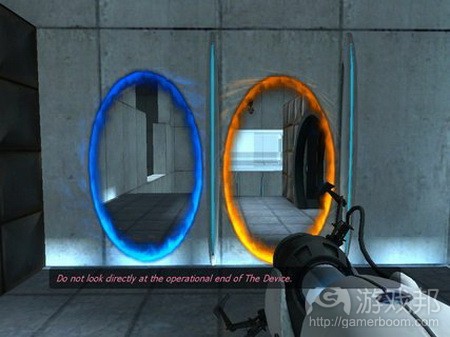分析玩家因沮丧而离开游戏的几大原因
作者:Brice Morrison
有多少游戏你开始体验后没能最终完成?
若你和我一样,没完成的游戏远比完成的多。这颇令人沮丧;没完成游戏好比在电影放映到一半时离开影院,至少就掌机游戏或多数独立游戏而言。被忽略的内容是整个游戏体验不可或缺的一部分。
有许多原因促使玩家离开游戏,这颇值得思考和探究。但本文主要谈论玩家离开游戏最普遍的原因:感到受挫。
之前我们曾谈到游戏趣味的5个层次。设计突出的作品通常会让玩家进入感兴趣(Interest)层次:他们沉浸于游戏体验中,周围世界逐渐消失,他们只专注于游戏探索、学习和乐趣。此时玩家的体验时间最久,其优点在于这是个自我激励的机制。玩家继续寻求更多内容,顺利完成这些内容,而游戏则乐于提供。他们顺利穿过战场,然后获得升级,获得积分,接着购买新服装和武器。他们希望继续挖掘游戏能够呈现的内容。
随着玩家继续在游戏中前进,他们的感兴趣感觉开始转变成满足(Satisfaction)层次。他们因自己的成就、所完成的关卡及所完成的装饰而感到自豪。他们继续游戏,不断占领更多地盘,受游戏体验的推动继续前进。他们感受到越来越多的趣味和欢乐。
但有时此呈螺旋上升之势的乐趣也会受到中断。这可能出于许多原因,但我最熟悉的就是遭遇受挫感。玩家希望继续此欢乐体验,但却无法实现。
为何无法实现?下面是些常见原因。
游戏对玩家而言过于困难
许多游戏(游戏邦注:特别是基于技能的游戏,例如sidescrollers或第一人称射击游戏)需要玩家的体验技能随游戏发展而提高。刚开始时,玩家也许只需跳过一个火坑,但现在他们需要连续跳过几个火坑。后面他们就需要在有敌人追逐,有时间限制的情况下,跳过火坑。
这本身没有什么不妥。自传统电玩游戏的自动模式开始,游戏就开始将逐步强化挑战作为维持玩家兴趣的渠道。将游戏视作挑战(自己&机器或者自己&其他玩家)的玩家通常会受到此内容的激发。
但有时挑战过于巧妙。若难度幅度过大,例如从1级升至2级,然后升至10级,玩家则会因此而受挫。“不!我很喜欢这款游戏。为什么它要这么难?我永远也无法完成这个任务……”
当然玩家能够在游戏中获得锻炼和提高,也许最终能够克服这些高难度障碍,但若玩家觉得自己无法在合理时间内完成这个任务,他们通常会选择在沮丧中放弃。
玩家不知如何继续
有时玩家会特定阶段迷失方向。他们在分叉路口选错方向,在应升级角色的情况下升级武器,或者找不到开门的按键。
庆幸的是,有些时候玩家能够轻松完成游戏任务。通过自己亲身体验及观察他人体验,聪明的开发者总是能发现玩家迷失方向的时刻。
在评论《Portal》时,Valve公司谈到他们常遇到的一个问题:要求玩家向上看。通常在《Portal》广阔的管道和充满混凝土的世界中,玩家需要仰望天花板获悉下步操作。但很多玩家没有这样做。相反他们将大量时间用于四处兜圈子,试验地板和墙面上的内容,而其实真正的解决方案就在他们的头顶上。
在《Portal》的某部分内容中,玩家得越过上方进入下个领域。为让玩家向上看,Valve添加了梯子,促使玩家向上迈进。几乎所有玩家都看到这把梯子,但当他们试图攀爬时,梯子便会分崩离析,致使他们重回地面。
此时玩家会进行什么操作?他们会向上看。
诸如此类的巧妙设计能够避免玩家迷失方向。但只有开发者获悉玩家迷失和放弃的地点,且在玩家感到受挫前花时间进行修复,这些巧妙设计才能够实现。
游戏的要求超出玩家预期
有时玩家喜欢的游戏要求过高。这有点类似于游戏变得过于有难度,但这偏向要求玩家进行他们不感兴趣的内容。
探险游戏《机械迷城》要求玩家解决各种谜题和谜语。但随后探险内容发生变化,融入类似动作射击游戏的内容。游戏在此处理得当,保持内容的简短性。这非常明智,因为这与玩家先前体验的内容类型不同。若这部分持续过久,玩家也许就不会继续下去。
其他例子还包括社交游戏要求玩家邀请好友,RPG规定玩家只有在升级几天后才能完成最后的boss内容。若玩家不愿意让步,游戏体验就会中断。
把握游戏体验,制作预期作品
这些内容的核心并非“将游戏变得更加简单!”而是说开发者需清楚游戏向玩家传递的趣味层次,确保这同玩家的预期核心体验保持一致。若游戏所要呈现的内容就是无助感和迷失感,那么开发者就应在游戏中融入令玩家不知所措的环节。若游戏所瞄准的玩家就是那么喜欢颇具难度挑战群体,那么不妨迎合这些玩家的口味。
把握游戏核心体验是关键,确保体验就是你希望向玩家呈现的内容。(本文为游戏邦/gamerboom.com编译,拒绝任何不保留版权的转载,如需转载请联系:游戏邦)
Avoid Losing Players Who Hit the Frustration Wall
by Brice Morrison
How many games have you started playing that you didn’t complete?
If you’re like me, my guess is far more than you have started and completed. This is very sad; not finishing a game, at least a console game or most indie games, is like walking out in the middle of the movie. There are whole parts of the experience, crafted by the developer, that are being left out.
There are many reasons why players might leave a game, and they are definitely worth thinking about and exploring. But in this post I’m just going to talk about one of the most common reasons that players will quit a game: the Frustration Wall.
In a previous article, we discussed the 5 Degrees of Fun in games. Successfully designed game titles get their players to experience the degree of Interest: they are immersed in the experience, the rest of the world falls away, and they are just focused on exploring, learning, and enjoying themselves in the game. This is the state where players often find themselves for the longest period of time, which is fine because it is a self-motivating state of gameplay. The player keeps asking for more, pulling themselves through the game’s content, and the game is happy to continue giving it. They are walking through the field, they are leveling up, they are getting points, they are buying new clothes or weapons. They want to explore what the game has to offer.
As players move through the game their interest begins to rotate with the Degree of Satisfaction. They are proud of what they have accomplished, the levels they completed, the artwork they made. They are continuing through the game putting notches on their belt, and are propelled forward by the experience. They are experiencing an upward spiral of fun and enjoyment.
However, sometimes this wonderful upward spiral can be abruptly interrupted. This can happen for many reasons, but the circumstance that I am most familiar with is running into the Frustration Wall. When the player wants to continue, they would love to continue, but they just…can’t.
Why can’t they? There are a couple of common reasons.
The game may have gotten too difficult for the player.
Many games, especially skill based games such as sidescrollers or first person shooters, require their players to become more talented at playing the game as the title wears on. In the beginning they only had to jump over one fiery pit, but now they need to jump over several fiery pits in succession. Later on they’re going to have to jump over fiery with enemies chasing them and a time limit.
There’s nothing inherently wrong with this. Ever since the coin-op days of old arcades, games have used increasing challenge as a way to keep players interested in the game as time goes on. Players who enjoying seeing their games as a challenge, them versus the machine or them versus other players, will usually be motivated by this challenge.
However sometimes the challenge can be too great. If the ramp up of difficulty is too sharp, going from difficulty 1, to 2, to 10 so to speak, players can get disheartened. “No! I was so excited about this game. Why did it have to get so hard? I’ll never get past this…”
Of course players can train and improve at the game and probably eventually continue on through the difficult points, but if the player can’t imagine for themselves getting there in a reasonable amount of time, they are likely to give up in a fit of frustration.
The player may not know how to continue.
Sometimes in games players can get lost for extraordinary amounts of time. They take a wrong turn down an alley, they start leveling up their weapons when they’re supposed to be leveling up their characters, or they simply can’t figure out what button to press to open a door.
Luckily, these are the moments in a game that are most easily patched. By not only playing through the game yourself, but also observing as other people play through the game, a smart developer can find the moments where players are most likely to get lost.
In the commentary on the legendary puzzle/action game, Portal, Valve developers discussed one of the issues that they always ran into: getting players to look up. Often in the expansive pipeline and concrete filled world of Portal, players would need to look towards the ceiling to figure out what to do next. However, many players didn’t do this. Instead they would spend enormous amounts of time walking around in circles, trying everything on the floor and on the walls in front of them, while the solution was right above their nose.
In one particular part of Portal, the player needs to go up and over in order to get to the next area. In order to get players to look up, the Valve designers added a ladder to get them to go up. Almost all players saw the ladder, but when they tried to climb it, it would crumble and fall apart, landing them down on the floor again.
And what did players do at this point? They would look up.
Clever tricks like this keep players from getting lost. However these tricks can only be conceived when the developer is aware of areas where the player can get lost and give up on the game, and then takes the time to repair these areas before the player gets frustrated.
The game may ask more than the player wants to give.
Sometimes a game that players enjoy can just become too demanding. This is a little similar to when a game gets to difficult, but falls more under the category of asking the player to do something they just flat out aren’t interested in.
Machinarium, an adventure title, has a wide variety of puzzles and riddles for the player to solve. Later on in the game the adventure takes a twist, however, and has a segment that is more like an action shooter. The game handles this section well and keeps it short. This is wise, considering that it is very different from the type of game the player has played (and enjoyed) up to that point. If this action section went on for a while, then the puzzle players may not be willing to continue.
Other examples could be some social games asking players to invite their friends, or an RPG requiring players to level up for days before being able to complete the final boss. If the player is not willing to concede, the gameplay experience could be stopped like a brick wall.
Understand Your Experience, Make the Game You Want
The point of all this isn’t to say “Make your games easier!” It is to say that developers should be acutely aware of the Degrees of Fun that their game is taking the player through, and make sure that they align with the Core Experience that they want. If the game is about feeling hopeless and lost, then perhaps it’s OK for the designer to have areas of the game where the player has no idea what to do. If the game is about unreasonably difficult challenge for players who like that sort of thing, then perhaps it’s fine to alienate many potential players in favor of the ones who will relish the experience (many bullet-hell games fall into this category).
As always on The Game Prodigy, the point is to have a good understanding of the Core Experience your game is making and be sure that it is what you would like your players to enjoy.(Source:thegameprodigy)
上一篇:游戏应如何随着玩家的成长而成长?
下一篇:阐述游戏社区管理员角色职能的演变









































 闽公网安备35020302001549号
闽公网安备35020302001549号